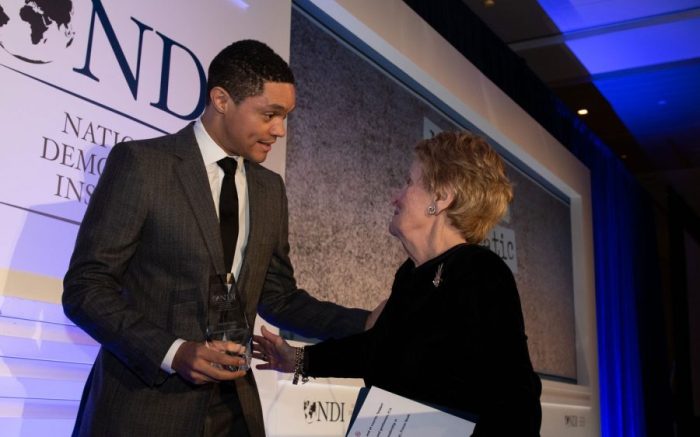Noah receives a $5 discount, and with that, a door opens to a world of financial savings and psychological influences on purchasing decisions. This article delves into the significance, calculation, and application of this discount, exploring its impact on consumer behavior and the strategies businesses employ to leverage its power.
From calculating percentage discounts to understanding the psychological effects of discounts on impulsive buying and brand loyalty, this comprehensive analysis unravels the multifaceted nature of discounts and their role in shaping consumer choices.
Initial Discount Overview

Receiving a $5 discount can be a significant advantage for consumers, offering potential savings on purchases and influencing purchasing decisions. However, it is essential to consider both the benefits and drawbacks of receiving a discount to make informed choices.
One of the primary benefits of receiving a $5 discount is the immediate cost savings it provides. This can be particularly valuable for budget-conscious shoppers or those making large purchases. For example, if a consumer is considering buying a $50 item, a $5 discount would reduce the cost by 10%, potentially making the purchase more affordable.
Drawbacks of Receiving a Discount
While discounts can be beneficial, there are also potential drawbacks to consider. One potential drawback is that discounts can sometimes lead to impulse purchases. When consumers see a discounted item, they may be more likely to purchase it, even if they do not need it.
This can lead to overspending and unnecessary clutter.
Discount Calculation

Calculating the discount amount involves determining the percentage discount and applying it to the original price. Follow these steps:
Percentage Discount Calculation
The percentage discount represents the proportion of the original price that is deducted. To calculate it:
- Convert the discount amount to a decimal by dividing it by 100. For example, a 10% discount becomes 0.1.
- Subtract the discount decimal from 1. In the example, 1
0.1 = 0.9.
- Multiply the result by 100 to express it as a percentage. In this case, 0.9
100 = 90%.
Discounted Amount Calculation
Once you have the percentage discount, you can calculate the discounted amount:
- Multiply the original price by the percentage discount decimal. For instance, if the original price is $100 and the discount is 10%, you would calculate $100 – 0.1 = $10.
- Subtract the discounted amount from the original price to get the discounted price.
Examples
Here are some examples of discount calculations:
| Original Price | Discount | Percentage Discount | Discounted Amount | Discounted Price |
|---|---|---|---|---|
| $150 | $15 | 10% | $15 | $135 |
| $200 | $25 | 12.5% | $25 | $175 |
| $300 | $50 | 16.67% | $50 | $250 |
Discount Application

Noah’s $5 discount can be applied during the checkout process when making an online purchase from the store’s website. The discount will be automatically applied to the total purchase amount once the discount code is entered into the designated field.
There are a few restrictions and limitations to the use of the discount:
- The discount is valid for one-time use only.
- The discount cannot be combined with any other offers or promotions.
- The discount is not applicable to gift cards or shipping charges.
Eligible Purchases
The discount can be applied to all regular-priced items on the store’s website, including clothing, accessories, and home goods.
Ineligible Purchases
The discount cannot be applied to sale items, clearance items, or items that are already discounted.
Comparison to Other Discounts

Noah’s $5 discount falls under the category of fixed-amount discounts. To assess its value, let’s compare it to other common discount types:
Percentage Discounts
Percentage discounts reduce the price of an item by a certain percentage. These discounts are typically expressed as a percentage off the original price, such as 10% off or 50% off. The advantage of percentage discounts is that they can be applied to items of any price, making them a versatile option.
However, they can be less valuable for items that are already priced low.
Buy-One-Get-One-Free (BOGO) Discounts, Noah receives a discount
BOGO discounts offer a free item for every item purchased. These discounts are popular for items that are sold in multiples, such as clothing or groceries. The advantage of BOGO discounts is that they can provide a significant saving, especially if the items are expensive.
However, they can be less valuable for items that are not typically purchased in multiples.
Value of the $5 Discount
The value of the $5 discount depends on the price of the item being purchased. For low-priced items, the discount may not be as significant as a percentage discount or BOGO discount. However, for higher-priced items, the $5 discount can provide a substantial saving.
Consumer Behavior
Receiving a $5 discount can significantly influence consumer behavior. Discounts tap into psychological factors that trigger impulsive buying and foster brand loyalty.
Impulsive Buying
Discounts create a sense of urgency and excitement, encouraging consumers to make purchases they might not have otherwise considered. The limited-time nature of discounts instills a fear of missing out (FOMO), prompting consumers to act quickly.
Brand Loyalty
Discounts can also build brand loyalty by rewarding repeat customers and creating positive associations with the brand. When consumers consistently receive discounts from a particular store or brand, they are more likely to develop a preference for that brand over competitors.
Noah was ecstatic when he received a $5 discount on his purchase. He had been eyeing a new book on fiveable ap world unit 5 for some time, and the discount made it affordable. He couldn’t wait to dive into the fascinating world of ancient civilizations.
Marketing Implications

Discounts play a crucial role in marketing strategies by offering customers financial incentives to purchase products or services. Businesses utilize discounts to attract new customers, build brand loyalty, and drive sales.
Attracting new customers: Discounts can entice potential customers to try a product or service for the first time. By offering a lower price, businesses can reduce the perceived risk associated with purchasing an unfamiliar item.
Retaining existing customers: Discounts can also be used to reward loyal customers and encourage repeat purchases. By offering exclusive discounts or loyalty programs, businesses can show appreciation for their customers and encourage them to continue doing business with them.
Successful Marketing Campaigns Utilizing Discounts
- Starbucks’ “Happy Hour” promotion, which offered discounted drinks during specific hours, successfully attracted new customers and increased sales.
- Amazon’s “Prime Day” event, which offered exclusive discounts to Prime members, generated significant revenue and drove customer loyalty.
- Nike’s “Member Days” program, which offered discounts and exclusive access to products for members, helped build a loyal customer base and increased brand engagement.
Ethical Considerations

Discounts are a powerful marketing tool, but they also raise ethical concerns. It’s crucial to use discounts responsibly to avoid misleading or manipulating consumers.
Potential for Misleading or Manipulating Consumers
Discounts can be misleading if they are not presented clearly and honestly. For example, a discount that is advertised as “50% off” may only apply to a limited selection of items or may require a minimum purchase amount. This can lead consumers to believe they are getting a better deal than they actually are.
Discounts can also be manipulative if they are used to pressure consumers into making a purchase they may not otherwise make. For example, a “limited-time offer” or a “buy now, pay later” promotion can create a sense of urgency that leads consumers to make impulsive decisions.
Guidelines for Ethical and Responsible Use of Discounts
To ensure that discounts are used ethically and responsibly, marketers should follow these guidelines:
- Be transparent about the terms and conditions of the discount.
- Avoid using misleading or deceptive language.
- Do not use discounts to pressure consumers into making a purchase.
- Consider the impact of discounts on consumers’ financial well-being.
By following these guidelines, marketers can use discounts to promote their products and services while also protecting consumers from being misled or manipulated.
Question & Answer Hub: Noah Receives A Discount
What is the significance of a $5 discount?
A $5 discount represents a tangible reduction in the original price, making products more affordable and enticing to consumers.
How can I calculate the percentage discount from the original price?
To calculate the percentage discount, divide the discount amount by the original price and multiply by 100. For example, a $5 discount on a $20 product represents a 25% discount (5/20 – 100 = 25%).
Where can I apply the $5 discount?
The application of the discount may vary depending on the store or business. It can be applied at the checkout counter, through online promo codes, or via loyalty programs.